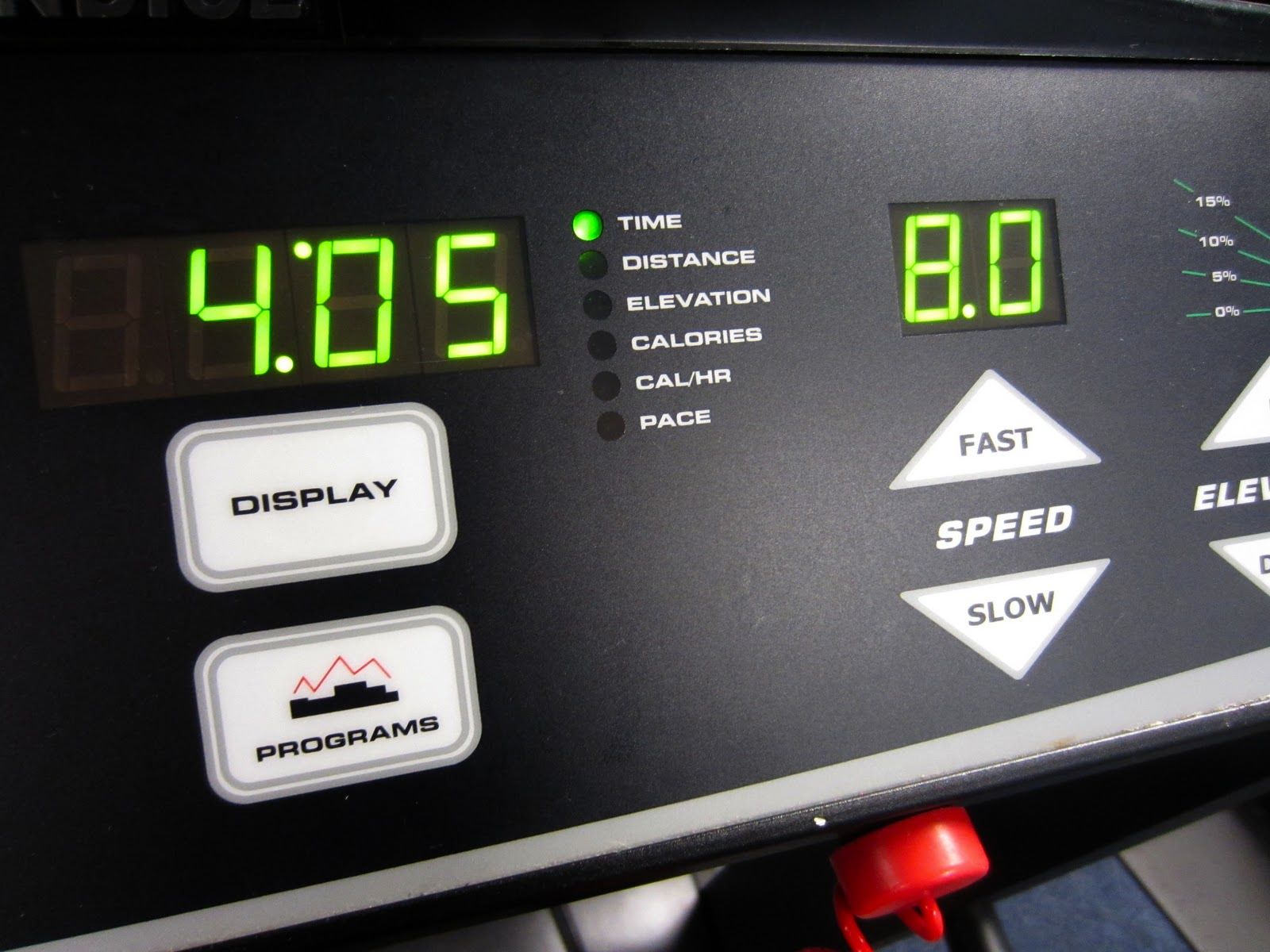

Featured
How To Pace A Mile
Published: October 5, 2023
Learn how to pace a mile with our featured guide. Discover tips and strategies to improve your running performance and achieve your mile goals.
Introduction
Pacing a mile is a fundamental skill for runners of all levels. Whether you are a beginner trying to improve your fitness or an experienced athlete aiming for a personal record, understanding how to pace a mile can make a significant difference in your performance. Pacing refers to the distribution of effort over a given distance, ensuring that you maintain a consistent speed throughout the mile.
Why is pacing important? Well, the pace you choose to run a mile directly affects your overall time, endurance, and ability to finish strong. Setting the right pace can help you avoid burning out too early or finishing the race with leftover energy.
In this article, we will delve into the benefits of pacing a mile, provide valuable tips and strategies to help you pace effectively, and highlight common mistakes to avoid. Whether you are training for a mile race or simply want to improve your running performance, mastering the art of pacing will undoubtedly propel you towards success.
Benefits of Pacing a Mile
Pacing a mile offers numerous benefits that can greatly enhance your running performance. Let’s explore some of the key advantages:
- Improved Endurance: Pacing allows you to distribute your energy evenly throughout the mile, preventing early fatigue and helping you maintain a steady pace. By avoiding sudden bursts of speed or slowing down too much, you can build your endurance and push through challenging moments.
- Optimal Time Management: A well-paced mile can help you achieve your desired time goals. By calculating your target pace beforehand and sticking to it during the run, you can strategize your effort and finish the mile within your desired timeframe.
- Efficient Energy Expenditure: When you pace a mile, you avoid wasting energy on unnecessary sprints or fluctuations in speed. By running at a consistent pace, you optimize your energy expenditure and increase your overall efficiency, allowing you to cover the distance without feeling overly exhausted.
- Increased Confidence: Pacing a mile successfully can provide a major boost to your self-confidence as a runner. When you maintain a steady and controlled speed throughout the mile, you prove to yourself that you’re capable of running smart and achieving your goals. This confidence can transfer to other areas of your running and beyond.
- Better Race Tactics: Pacing a mile is essential for race day success. By mastering the art of pacing during training, you’ll be equipped with valuable insights about your running abilities. This knowledge will enable you to make informed decisions during a race, such as when to push your pace, when to conserve energy, and how to strategically overtake other runners.
Incorporating pacing into your training routine offers numerous advantages that extend beyond just running a mile. These benefits can positively impact your overall fitness, endurance, and mental stamina, making you a stronger and more efficient runner.
Tips for Pacing a Mile
Pacing a mile effectively requires a combination of strategy, self-awareness, and practice. Here are some valuable tips to help you master the art of pacing:
- Know Your Target Pace: Before you start running, determine your target pace for the mile. Research the average pace you need to maintain to achieve your goal time. This will serve as your baseline and guide your pacing strategy.
- Start Steady: Begin the mile with a slightly conservative pace to conserve your energy. It’s better to have some energy left in the tank for the later part of the run than to exhaust yourself early on.
- Use a GPS Device or Timing App: Utilize a GPS watch or a smartphone running app to track your pace in real-time. This will help you stay on target and make necessary adjustments if you are running too fast or too slow.
- Focus on Breathing: Pay attention to your breathing throughout the mile. Aim for a consistent and controlled breathing pattern to avoid becoming too winded or experiencing stitches in your side.
- Break the Mile into Segments: Mentally divide the mile into quarters or half-mile intervals. This can help you stay focused and motivated during the run. Additionally, try to maintain a slightly faster pace during the last portion to finish strong.
- Practice Negative Splits: Negative splits involve running the second half of the mile faster than the first half. This pacing strategy can help you build momentum and finish the mile strong, as opposed to starting too fast and fading towards the end.
- Learn from Your Runs: Reflect on your training runs and races to gain insights into your pacing strengths and weaknesses. Analyze your performance and adjust your pacing strategy accordingly for future runs.
- Train in Varied Conditions: Practice pacing in different weather conditions and terrains to adapt your pace accordingly. This will prepare you for race day scenarios where external factors can affect your performance.
- Seek Accountability and Support: Join a running group or find a training partner to help you stay accountable to your pacing goals. Having someone alongside you can provide motivation, encouragement, and an extra set of eyes to monitor your pace.
- Stay Patient: Pacing a mile may take time and practice to master. Be patient with yourself and focus on gradual improvement. Remember, consistency and perseverance are key to becoming a better paced runner.
By implementing these tips and incorporating them into your training routine, you’ll be well on your way to becoming a skilled pacer and achieving your mile goals.
Setting Realistic Mile Pace Goals
Setting realistic mile pace goals is crucial for effective pacing and overall performance improvement. Here are some important factors to consider when establishing your pace goals:
- Current Fitness Level: Assess your current fitness level by considering your recent race times or previous running performances. This will give you a baseline to determine a challenging yet attainable pace goal.
- Past Mile Performance: Evaluate your previous mile races or time trials to gauge your capabilities. Consider any trends or patterns in your pacing and identify areas for improvement.
- Progressive Training: Gradually increase your training intensity and volume to build your speed and endurance. Pushing yourself too hard too soon can lead to injuries or unrealistic pace goals.
- Time Constraints: Take into account any time constraints or deadlines you have for a specific race or event. This will help you determine whether you need to adjust your pace goals to fit your training timeline.
- Course Difficulty: Consider the terrain and elevation of the course where you’ll be running the mile. Hilly courses or challenging surfaces may require a slightly slower pace goal compared to a flat and fast course.
- Weather Conditions: Different weather conditions can affect your pace. Strong winds, high humidity, or extreme heat can make running more challenging and may require adjustments to your pace goals.
- Long-Term Progression: Set both short-term and long-term pace goals. Start with smaller improvements in your pace and gradually work towards bigger milestones over time to prevent overwhelming yourself.
- Pacing Strategies: Consider the pacing strategies you’ll be employing during the mile. If you plan to start conservatively and finish strong, adjust your pace goal accordingly to accommodate for a faster second half.
- Mental and Physical Preparedness: Assess your mental and physical readiness for the mile. Setting realistic pace goals takes into account your confidence, focus, and overall preparedness to maintain the desired pace.
- Consult with a Coach: Seek guidance from a running coach or experienced runners who can provide objective feedback and help you establish realistic pace goals based on your individual abilities and training.
Remember, setting realistic mile pace goals is essential for maintaining motivation, preventing burnout, and achieving sustainable progress. By considering these factors and tailoring your pace goals to your specific circumstances, you’ll be on the right path towards reaching your full running potential.
Warm-Up Strategies for Mile Pacing
Proper warm-up is essential for preparing your body and mind for an optimal mile pacing experience. Here are some effective warm-up strategies to incorporate into your routine:
- Dynamic Stretching: Engage in dynamic stretching exercises that target the muscles you’ll be using during your run. This can include leg swings, walking lunges, high knees, and ankle rotations. Dynamic stretching helps improve flexibility, mobility, and blood flow to the muscles.
- Light Jogging: Start your warm-up with a light jog of 5-10 minutes. This raises your heart rate, increases blood flow, and loosens up your muscles. Gradually increase your pace during the jog to mimic the intensity of your goal mile pace.
- Strides: Incorporate strides into your warm-up routine. Strides are short bursts of fast-paced running, typically lasting 20-30 seconds. Strides help prime your muscles and nervous system for the faster pace you’ll be aiming for during the mile.
- Drills: Perform running drills such as high knees, butt kicks, and skipping to improve running form and activate key muscles. These drills can also help reinforce proper mechanics and enhance efficiency during your mile pace.
- Activation Exercises: Activate specific muscles used in running, such as the glutes and core, through exercises like hip bridges, plank variations, and clamshells. Activating these muscles ensures they’re firing properly during the run and helps prevent imbalances or injuries.
- Mental Preparation: Use the warm-up period to mentally prepare for the mile. Visualize yourself running at your target pace, feeling strong and in control. Positive affirmations and deep breathing exercises can also help calm nerves and enhance focus.
- Gradual Intensity Increase: During your warm-up, gradually increase the intensity to transition your body from rest to running mode. This allows your cardiovascular system to adapt, minimizes the risk of injury, and prepares you for the faster pace of the mile.
- Preventive Mobility Exercises: Address any tight or problematic areas with mobility exercises before starting your run. This can involve foam rolling or using mobility tools to release tension and improve range of motion.
- Hydration and Nutrition: Ensure you are adequately hydrated and have consumed a balanced meal or snack prior to your run. Proper hydration and nutrition contribute to optimal performance and help prevent energy crashes.
- Don’t Rush: Give yourself enough time to complete a thorough warm-up. Rushing through the warm-up can lead to insufficient preparation and increase the risk of injuries. Allocate at least 10-15 minutes for an effective warm-up routine.
By incorporating these warm-up strategies into your pre-run routine, you’ll prime your body for the demands of mile pacing, reduce the risk of injuries, and set the stage for a successful and enjoyable run.
Techniques to Maintain Mile Pace
Maintaining mile pace requires focus, discipline, and efficient running techniques. Here are some effective strategies to help you maintain your desired pace throughout the mile:
- Stay Relaxed: Focus on maintaining a relaxed posture, with your shoulders down and your arms and hands relaxed. Tension in your upper body can waste energy and negatively affect your pacing.
- Run with a Consistent Cadence: Maintain a steady rhythm by running with a consistent cadence, or step rate. Aim for around 180 steps per minute, which can help optimize your running efficiency and maintain a more consistent pace.
- Use Breathing Techniques: Focus on breathing deeply and rhythmically during your mile. Use a breathing pattern that feels natural and comfortable for you, such as inhaling for two steps and exhaling for two steps.
- Find a Pacemaker: If possible, run with someone who has a similar pace or slightly faster. Use them as a visual and mental guide to help maintain your mile pace. Alternatively, simulate a pacemaker in your mind by imagining running with someone just ahead of you.
- Maintain a Steady Effort: Avoid the temptation to sprint at the beginning or push harder than necessary. Instead, focus on maintaining a consistent level of effort throughout the mile. Reserve energy for a strong finish, if desired.
- Practice Even Splits: Aim to divide your mile evenly into sections, with each section taking up an equal amount of time. This strategy, called even splits, can help you maintain a steady pace and avoid the tendency to start too fast and fade toward the end.
- Focus on Form: Maintain good running form throughout the mile. Keep your body aligned, engage your core, and land lightly on your feet. Poor form can lead to inefficient movement and a loss of pace.
- Stay Mentally Engaged: Keep your mind focused and engaged during the mile. Use positive self-talk, visualization techniques, or mantra repetition to maintain motivation and stay present in the moment.
- Monitor Your Pace: Continuously check your pacing during the mile. Use a GPS watch, running app, or track markers to ensure you’re maintaining your target pace. Make slight adjustments as necessary to stay on track.
- Gradually Increase Speed: If you have energy left towards the end of the mile, gradually increase your speed in the last stretch. Push yourself to finish strong while maintaining control and form.
By implementing these techniques and incorporating them into your running practice, you’ll develop the skills and mindset needed to maintain your desired mile pace. Consistent practice and patience will allow you to become a more efficient and effective paced runner.
Monitoring and Adjusting Mile Pace during the Run
Monitoring and adjusting your mile pace during the run is crucial for maintaining control and achieving your pacing goals. Here are some key strategies to help you effectively monitor and make necessary adjustments to your pace:
- Use a GPS Device or App: Utilize a GPS watch or a running app that provides real-time pacing feedback. This will allow you to monitor your current pace and compare it to your target pace. Adjust your speed accordingly to stay on track.
- Pay Attention to Perceived Effort: Listen to your body and gauge your perceived effort level during the run. If you find yourself struggling or feeling excessively fatigued, it may be an indication that you need to ease off the pace or make subtle adjustments.
- Check Your Breathing: Monitor your breathing pattern throughout the mile. If you find yourself breathing rapidly or struggling to catch your breath, it can be a sign that you are pushing too hard. Slow down slightly to regain control of your breathing and maintain a manageable pace.
- Break the Mile into Checkpoints: Mentally divide the mile into smaller checkpoints, such as quarter-mile or half-mile intervals. At each checkpoint, assess your pace and make adjustments if necessary. This allows you to stay mindful of your pacing and make timely corrections when needed.
- Listen to Your Body: Be attuned to your body’s signals during the run. Pay attention to any signs of discomfort, muscle fatigue, or abnormal breathing. Adjust your pace accordingly to prevent overexertion or potential injuries.
- Practice Pace Oscillation: Experiment with slight variations in pace without compromising your overall target pace. This technique involves purposely increasing your speed for a short distance, then returning to your original pace. Pace oscillation can help break up monotony and maintain focus.
- Consider External Factors: Take into account any external factors that may affect your pace, such as wind resistance, temperature, or terrain. Adjust your expectations and pace accordingly to accommodate for these variables.
- Use Visual Cues: Look ahead and identify landmarks or objects on the course as visual cues. Use these cues to gauge your progress and make adjustments. For example, if you’re behind your target pace, use these cues to increase your speed and vice versa.
- Practice Negative Splitting: Aim to run the second half of the mile slightly faster than the first half. This pacing strategy can help you finish strong and maintain a consistent pace throughout the run.
- Reflect and Learn: After each run, reflect on your pacing performance and identify areas for improvement. Learn from your experiences to fine-tune your pacing strategies for future runs.
Monitoring and adjusting your mile pace during a run is a skill that comes with practice and experience. By implementing these strategies, you’ll become more adept at maintaining control, making necessary adjustments, and ultimately achieving your desired mile pacing goals.
Mental Strategies for Mile Pacing
Maintaining a strong mental game is essential for mile pacing success. Here are some effective mental strategies to help you stay focused, motivated, and on track during your mile run:
- Set Positive Affirmations: Develop positive affirmations that align with your pacing goals. Repeat these affirmations to yourself during the run to stay motivated and reinforce a confident mindset.
- Visualization: Visualize yourself running at your desired pace and crossing the finish line with a sense of accomplishment. Visualizing success primes your mind to believe in your abilities and reinforces your pacing goals.
- Break the Mile into Smaller Goals: Divide the mile into smaller, attainable goals. Focus on reaching each milestone rather than fixating solely on the entire distance. This approach helps make the task more manageable and keeps you motivated along the way.
- Practice Mindfulness: Stay present and fully engaged in the moment during the mile. Pay attention to your breathing, the rhythm of your footsteps, and the sensations in your body. Being mindful helps you maintain focus and prevent distractions from affecting your pacing.
- Use Mantras: Develop short, powerful phrases or mantras that resonate with you. Repeat these mantras silently or out loud during your run to stay mentally strong and focused. Examples could include “strong and steady” or “one step at a time.”
- Find Inspiration: Seek inspiration from others who have successfully paced a mile or achieved their running goals. Read success stories, watch motivating videos, or connect with a running community to fuel your determination and inspire your own achievements.
- Avoid Negative Self-Talk: Reframe negative thoughts or self-doubt into positive and encouraging self-talk. Instead of focusing on what you can’t do, concentrate on what you can do and remind yourself of the progress you’ve made.
- Embrace Discomfort: Accept and embrace the discomfort that comes with pushing your limits. Remind yourself that growth and improvement happen outside of your comfort zone. Embracing discomfort helps you stay resilient and committed to your pacing goals.
- Stay Flexible: Be adaptable and prepared for unexpected situations during the mile. If you encounter challenges or need to make adjustments to your pacing strategy, approach them with a flexible mindset. Embrace the opportunity to learn and make necessary modifications along the way.
- Celebrate Milestones: Acknowledge and celebrate milestones and achievements along the way. Recognize small victories during the mile, such as reaching a halfway point or maintaining a consistent pace. Celebrating these milestones boosts motivation and reinforces positive mental associations with pacing.
Maintaining a strong mental game is just as important as physical preparation when it comes to mile pacing. By incorporating these mental strategies into your training and racing routine, you’ll develop the mental toughness and resilience needed to achieve your pacing goals and perform at your best.
Common Mistakes to Avoid when Pacing a Mile
When it comes to pacing a mile, there are common mistakes that runners often make. Being aware of these mistakes can help you avoid them and ensure a successful mile pacing experience. Here are some common mistakes to avoid:
- Starting Too Fast: One of the most common mistakes is starting the mile at a pace that is too fast. This can lead to early fatigue and difficulty maintaining the desired pace for the entire distance. Start with a slightly conservative pace to establish a solid foundation and gradually build speed.
- Neglecting Proper Warm-up: Skipping or rushing through your warm-up can hamper your ability to maintain pace. A thorough warm-up routine helps prepare your muscles, joints, and cardiovascular system for the demands of mile pacing. Dedicate sufficient time to warm-up exercises and dynamic stretches.
- Ignoring Feedback: Ignoring important feedback from your body or monitoring devices can lead to pacing errors. Pay attention to how you feel during the run and make necessary adjustments. Use GPS watches, running apps, or track markers to stay aware of your pace and make timely corrections if needed.
- Lack of Consistency: Inconsistent pacing, marked by sudden bursts of speed or significant fluctuations in pace, can negatively impact your overall performance. Aim to maintain a steady and consistent pace throughout the mile, rather than allowing for drastic changes in speed.
- Poor Time Management: Failing to effectively manage your time during the mile can result in either finishing too early or running out of time to reach your pacing goals. Develop a pacing strategy that ensures you reach the desired pace and pace goals at key points during the mile.
- Overlooking Mental Preparation: Neglecting mental preparation can lead to decreased focus and motivation during the mile. Mental strength is essential for maintaining pace and pushing through challenging moments. Incorporate mental strategies such as visualization, positive self-talk, or mantras into your preparation routine.
- Ignoring External Factors: Disregarding external factors like weather conditions, terrain, or elevation can affect your pacing strategy. Adjust your expectations and pace goals accordingly to compensate for these factors. Be prepared for any challenges that may arise.
- Failure to Practice Pacing Techniques: Without proper practice, it can be challenging to execute your pacing strategy effectively. Regularly incorporate pace-specific workouts into your training regimen to develop pacing skills, understand your body’s response, and fine-tune your strategy for mile pacing.
- Lack of Patience: Patience is vital in mile pacing. It takes time to develop the necessary skills, endurance, and mental toughness. Avoid the temptation to rush progress or set unrealistic goals. Be patient, consistent, and focus on gradual improvement.
- Not Evaluating and Learning: Failing to evaluate your pacing performance and learn from each run can hinder your progress. Reflect on each mile run and analyze what worked well and what needs improvement. Use this feedback to adjust your training and pacing strategy moving forward.
By avoiding these common mistakes and staying mindful of your pacing techniques, you’ll be better equipped to maintain a confident and controlled pace throughout your mile and achieve your desired goals.
Conclusion
Pacing a mile is a skill that can greatly enhance your running performance and help you achieve your goals. By understanding the benefits of pacing, implementing effective strategies, and avoiding common mistakes, you can become a more efficient and successful paced runner.
We explored the importance of setting realistic mile pace goals, which take into account your current fitness level, past performances, and external factors. It is crucial to establish goals that challenge you but are achievable with consistent effort and training.
Additionally, we discussed valuable tips for pacing a mile, including knowing your target pace, starting steady, using technology for tracking, and focusing on breathing. These strategies can help you maintain a consistent and controlled pace throughout the mile, prevent burnout, and optimize your overall performance.
Furthermore, we highlighted the significance of warm-up strategies to prepare your body for mile pacing. Engaging in dynamic stretching, light jogging, strides, and activation exercises enhances your muscle readiness and sets the stage for a successful run.
Maintaining mile pace requires mental fortitude as well. By employing techniques such as positive affirmations, visualization, and breaking the mile into smaller goals, you can keep your mind focused, motivated, and resilient during the run.
Monitoring and adjusting your mile pace, both physically and mentally, is vital for pacing success. Whether through GPS devices, perceived effort, or visual cues, staying aware of your pace allows you to make necessary adjustments and stay on track towards your goal.
Finally, we identified common mistakes to avoid when pacing a mile, including starting too fast, neglecting warm-up, overlooking mental preparation, and failing to practice pacing techniques. Understanding and addressing these mistakes can help you fine-tune your pacing strategy and maximize your potential.
Remember, mastering the art of pacing a mile takes time, patience, and practice. By incorporating these techniques and strategies into your training routine, you’ll develop the skills and mindset necessary to maintain a strong and steady mile pace. So lace up your shoes, set your goals, and embrace the challenges and rewards of pacing a mile!









